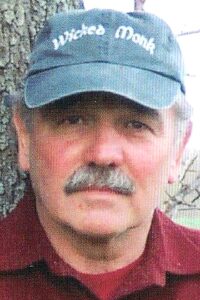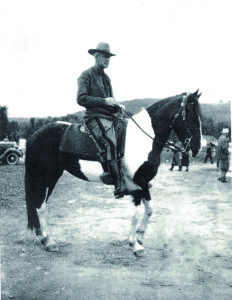LETTER from TERRY BERKSON
Otsego Lawman, Cunningham, Served
Otsego County With ‘Sleuth-Like’ Attention

John L. Cunningham became a New York State Trooper in 1917. He was among the 232 selected men who made up the first wave of the newly formed organization that would serve to uphold the law in rural areas under the leadership of Major George Fletcher Chandler.
Up until that time Cunningham, who was originally from Glens Falls, worked as a shirt cutter for 18 years. No doubt the newly formed force appealed to a now stationary 35 year old “man-with-scissors” who still loved to swim and had once been a high school basketball and track star.
He was a natural for equestrian and law enforcement training and excelled as a State Trooper. Within four years he was promoted to sergeant and transferred to an outpost in Cooperstown which was a substation of Troop C that was located in Sidney.
In Leatherstocking country he was provided a place in the village to live, conduct his police activities and board a horse upon which he patrolled Cooperstown and other environs in and out of Otsego and neighboring Counties. Because of his style and strict but fair enforcement of the law, he was already a local celebrity, by the time he married Elizabeth Lukas in 1931. They continued to live in various outposts in the village that were provided by The State Police.

By that time horses were being replaced by automobiles but the change for some reason did not appeal to the popular and well known Sergeant Cunningham who from time to time would put on public displays of great horsemanship on a pinto steed he called Tom. He also had a police dog named Trooper. Cunningham took his work very seriously and had the reputation of being a no nonsense law enforcer — who didn’t have a driver’s license. Occasionally, when a situation called for it, he would commandeer a car and pursue a fleeing perpetrator. Most of the time the driver would be totally agreeable to assisting the charismatic lawman. More than monitoring the roads and performing routine police work, Sergeant John, who was frequently called Jack, preferred doing detective work in cases involving arson, larceny and even murder. He was involved in bringing about the conviction of murderess Eva Coo in one of the most famous trials of the twentieth century. She and an accomplice had bludgeoned and then run over her “simple-minded” hired hand, making it look like a hit and run, for the insurance money of which she was secretly the beneficiary.
No violation of the law was too small to warrant Cunningham’s “sleuth-like” attention. In one case the sergeant accompanied by trooper Matthew Haskins followed a blood trail from the hennery of Charles Moore to the house of Cecil Goodspeed where it was discovered that Goodspeed and an accomplice had stolen three chickens and immediately quieted the birds by butchering them before selling them to a local restaurant where they received $2.25 for the delivery. The thieves were arrested and ultimately fined $5 each and given a sentence of 30 days in jail, which was suspended.
Cunningham actively headed the largest manhunt in the area’s history when an intoxicated tractor trailer driver ran down Chief of Police Robert K. Hannahs of Richfield Springs. Hannahs had stepped off the curb and was trying to flag down the speeding vehicle after it had passed a red light. Trucker, John Lee of Hudson, stopped his huge rig a mile and a half down the road and fled into the woods. Among the police’s several means of pursuit was horseback which necessitated the commandeering of a local farmer’s horse. Lee, totally exhausted by his forty-one hour flight on foot, by thumb and rail, finally surrendered to an officer in Utica whereby Sergeant Cunningham, and his “wheel man” trooper Haskins, picked Lee up and escorted him back to Cooperstown to await charges.
For the better part of 34 years (he retired at age 70) Cunningham served the public as a by-the-book law enforcer. Occasionally his character was shadowed in mystery and detective magazines. The span of his career included the time of prohibition when the sergeant was known to have made regular visits to Panther Mountain where the notorious bootlegger, Honey Joe, made metheglin out of the nectar his bees gathered. Whether the sergeant went there looking to shut down Honey Joe’s still or to sample its product is not on record.
John L. and Elizabeth Lucas Cunningham had one daughter, Mary Cunningham Devinpeck, who still lives near Cooperstown, and says of her father, “Boys in school were afraid to ask me out because of “the sergeant’s” stern reputation. But to me he was really a softy who loved to ride and swim and waltz me around the dance floor.”
‘There will never be another man like Sergeant John L. Cunningham,’ would be a fitting conclusion and summation of his life, but surprisingly there was another man … his identical twin brother, James J. Cunningham, who joined the state police the same year, served in Saugerties for almost as many years and whose career mirrored in many, many ways that of his celebrated twin brother.

